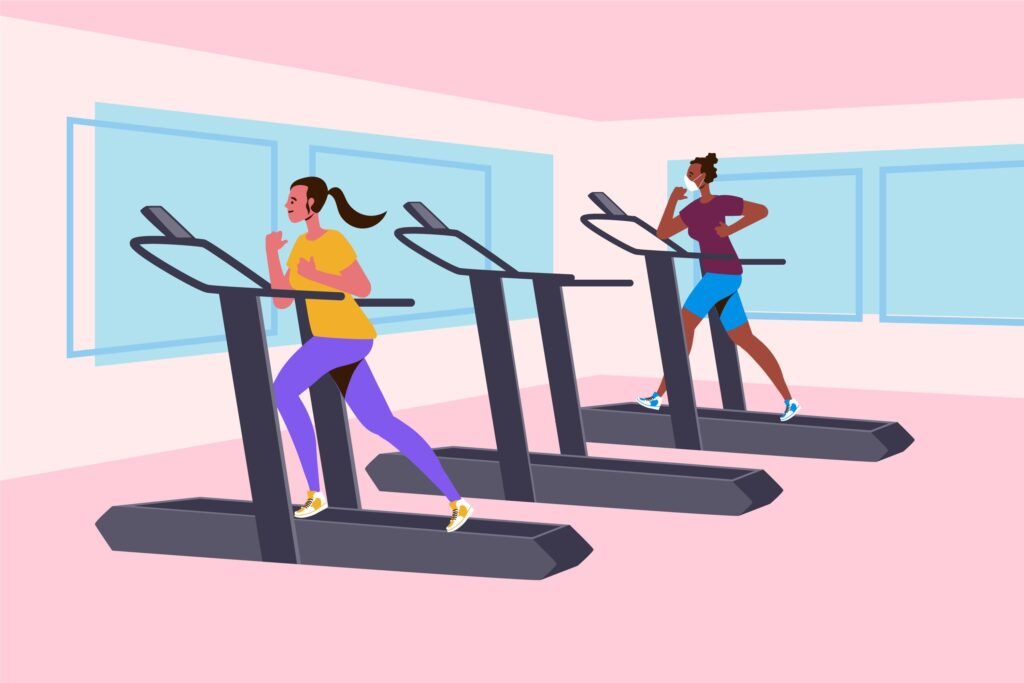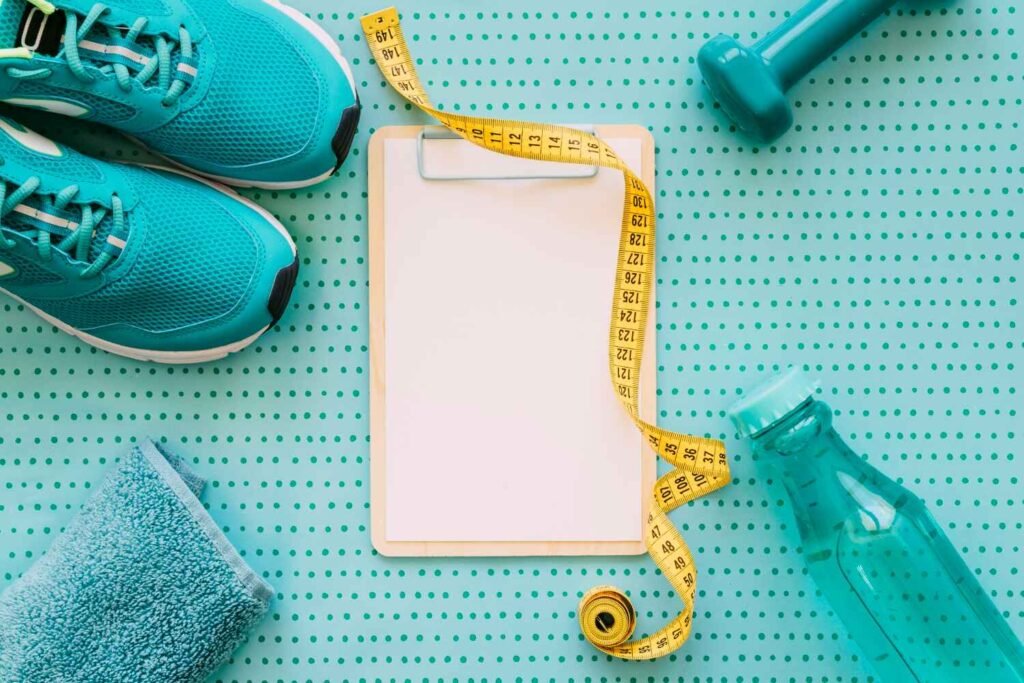
High-Intensity Interval Training (HIIT): Maximizing Efficiency in Workouts
Introduction to HIIT Workouts
High-Intensity Interval Training, or HIIT, has emerged as one of the most effective workout methods for achieving fitness goals in a time-efficient manner. With its quick bursts of intense exercise followed by short recovery periods, HIIT has transformed how people approach physical fitness. This form of training isn’t just for athletes—it’s adaptable, accessible, and results-driven for individuals at all fitness levels.
What is HIIT and How Does It Work?
HIIT is a training technique involving alternating between high-intensity activity and rest or low-intensity recovery. For example, sprinting for 30 seconds followed by walking for one minute is a classic HIIT sequence. This cycle is repeated multiple times for a workout lasting 15 to 30 minutes.
The primary principle behind HIIT is to push your heart rate to 80–95% of its maximum capacity during the high-intensity phase, then allow it to recover during the low-intensity phase. This approach keeps the body guessing, which leads to more calories burned in less time compared to steady-state cardio exercises.
Benefits of High-Intensity Interval Training
- Efficient Calorie Burning
HIIT is known for its ability to burn a high number of calories in a short duration. Studies show that a 30-minute HIIT workout can burn more calories than a longer steady-state cardio session. - Increased Metabolic Rate
After a HIIT workout, your body continues to burn calories even at rest. This effect, known as Excess Post-Exercise Oxygen Consumption (EPOC), helps boost metabolism and promotes fat loss. - Improved Cardiovascular Health
HIIT strengthens the heart by challenging it to pump blood more efficiently. It can improve VO2 max, which is the maximum amount of oxygen your body can use during intense exercise. - Time-Saving Workouts
For those with busy schedules, HIIT offers a full-body workout in as little as 20 minutes. This makes it ideal for people looking to maximize results with limited time. - Adaptability for All Fitness Levels
Whether you’re a beginner or an experienced athlete, HIIT can be tailored to meet your fitness needs. You can adjust the intensity, duration, and exercises to match your current capabilities.
The Science Behind HIIT: Why It Works
HIIT triggers physiological adaptations that enhance both aerobic and anaerobic performance. During high-intensity intervals, your body relies on anaerobic pathways for energy, which improves muscle endurance and power. The recovery phases, on the other hand, allow the aerobic system to replenish energy stores, creating a comprehensive training effect.
Additionally, HIIT promotes hormonal changes that aid in fat loss and muscle growth. For instance:
- Increased Growth Hormone Production: HIIT stimulates the release of growth hormone, which helps burn fat and preserve lean muscle.
- Enhanced Insulin Sensitivity: HIIT improves the body’s ability to utilize insulin, making it particularly beneficial for those managing blood sugar levels.
Key Components of an Effective HIIT Session
- Warm-Up
A proper warm-up prepares your muscles and cardiovascular system for the intensity ahead. Spend 5–10 minutes on light cardio and dynamic stretches. - Interval Ratio
A common HIIT ratio is 1:2 (e.g., 30 seconds of intense effort followed by 1 minute of rest). Beginners may start with a 1:3 ratio, while advanced trainees might progress to a 2:1 ratio. - Exercise Selection
HIIT can incorporate bodyweight exercises like burpees, mountain climbers, or jumping jacks, as well as equipment-based moves like kettlebell swings or cycling sprints. - Cool-Down
Finish your workout with 5–10 minutes of stretching or light movement to bring your heart rate back to baseline and aid recovery.
Popular HIIT Exercises to Try
- Sprint Intervals: Alternate between running at full speed and walking or jogging.
- Tabata Workouts: Perform 20 seconds of intense effort followed by 10 seconds of rest, repeated for 8 rounds.
- Bodyweight Circuits: Combine exercises like push-ups, squats, and planks for a full-body HIIT session.
Common Mistakes to Avoid During HIIT
- Skipping the Warm-Up
Jumping straight into high-intensity intervals can lead to injuries and reduce performance. Always start with a proper warm-up. - Overtraining
HIIT is highly demanding on the body. Overdoing it can lead to fatigue, burnout, or injury. Limit sessions to 3–4 times per week. - Neglecting Form
Performing exercises with poor technique during HIIT can lead to strain or injury. Focus on quality over quantity.
How to Structure a HIIT Workout
A successful HIIT routine depends on balance. The right structure ensures you maximize results while avoiding overtraining. Here’s a step-by-step guide to designing an effective HIIT workout:
- Set Clear Goals
- Decide what you want to achieve: weight loss, improved endurance, or muscle toning.
- Tailor your exercises to align with your fitness goals.
- Choose the Right Exercises
- Focus on compound movements like squats, push-ups, and burpees for full-body engagement.
- Incorporate both strength-based and cardio-focused exercises for a balanced routine.
- Determine Work-to-Rest Ratios
- Beginners can start with a 1:3 ratio, such as 20 seconds of effort and 60 seconds of rest.
- As your fitness improves, progress to a 2:1 ratio for a greater challenge.
- Adjust Duration Based on Fitness Level
- A typical HIIT session lasts 15–30 minutes.
- Avoid exceeding 30 minutes, as this can lead to diminishing returns and fatigue.
Sample HIIT Workout Plan for Beginners
Duration: 20 minutes
- Warm-Up (5 minutes): Light jogging or brisk walking followed by dynamic stretches.
- Workout (12 minutes):
- Jumping jacks (30 seconds) / Rest (60 seconds)
- Bodyweight squats (30 seconds) / Rest (60 seconds)
- Push-ups (30 seconds) / Rest (60 seconds)
- High knees (30 seconds) / Rest (60 seconds)
- Cool-Down (3 minutes): Slow walking and static stretches.
This beginner-friendly plan is designed to build stamina and prepare your body for more intense HIIT sessions.
Advanced HIIT Workout Plan
Duration: 25 minutes
- Warm-Up (5 minutes): Include dynamic movements like lunges, arm swings, and light cardio.
- Workout (15 minutes):
- Burpees (40 seconds) / Rest (20 seconds)
- Mountain climbers (40 seconds) / Rest (20 seconds)
- Dumbbell thrusters (40 seconds) / Rest (20 seconds)
- Cycling sprints (40 seconds) / Rest (20 seconds)
- Cool-Down (5 minutes): Stretch major muscle groups and practice deep breathing.
This routine is ideal for those who have mastered basic HIIT exercises and want to push their limits.
Nutrition Tips to Enhance Your HIIT Performance
Fueling your body properly before and after a HIIT session is crucial for performance and recovery.
- Pre-Workout Nutrition
- Eat a balanced meal 2–3 hours before your workout.
- Include complex carbs like oats or sweet potatoes and a moderate amount of protein.
- If you’re short on time, opt for a light snack like a banana with almond butter 30 minutes before exercising.
- Post-Workout Recovery
- Focus on replenishing glycogen stores and repairing muscle tissue.
- Combine protein and carbohydrates, such as a smoothie with whey protein, spinach, and berries.
- Hydration
- Stay hydrated before, during, and after your workout.
- Drink water infused with electrolytes for high-intensity sessions lasting longer than 20 minutes.
Common Misconceptions About HIIT
Despite its popularity, several myths surround HIIT. Let’s debunk the most common ones:
- Myth: HIIT is Only for Weight Loss
While HIIT is excellent for burning calories, its benefits go beyond weight loss. It improves cardiovascular health, builds muscle endurance, and boosts mental well-being. - Myth: HIIT Must Be Done Daily
Overtraining with daily HIIT can lead to burnout. Limit sessions to 3–4 times a week and incorporate active recovery days. - Myth: Longer Workouts Are Better
HIIT proves that quality matters more than quantity. A 20-minute high-intensity session can be more effective than an hour of steady-state cardio.
Signs You’re Overdoing HIIT
HIIT is demanding, and overdoing it can hinder progress. Watch for these warning signs:
- Persistent fatigue or lack of energy.
- Difficulty sleeping or feeling restless.
- Increased susceptibility to illness or injury.
If you experience these symptoms, reduce the frequency or intensity of your workouts and prioritize recovery.
Recovery Strategies for HIIT Enthusiasts
Proper recovery ensures you can maintain high performance without risking injury.
- Active Recovery Days
Include light activities like yoga, walking, or swimming to keep your body moving while allowing it to heal. - Stretching and Foam Rolling
Stretching improves flexibility, while foam rolling relieves muscle soreness and tightness. - Prioritize Sleep
Restorative sleep is essential for muscle repair and energy replenishment. Aim for 7–9 hours per night. - Nourish Your Body
Consuming anti-inflammatory foods like berries, fatty fish, and leafy greens can support recovery and reduce soreness.
Why Consistency Matters in HIIT
The effectiveness of HIIT depends on consistency. While it’s tempting to go all out in every session, focusing on long-term adherence will yield better results. Create a sustainable schedule, listen to your body, and celebrate small victories along the way.
How to Make HIIT a Sustainable Routine
Consistency is the key to success when incorporating HIIT into your lifestyle. The following strategies can help you make HIIT a regular and enjoyable part of your fitness journey:
- Start Small
- Begin with shorter sessions, such as 10–15 minutes, to build endurance.
- Gradually increase the intensity and duration as you become more comfortable.
- Schedule Your Workouts
- Treat your workouts like important appointments.
- Choose times that fit seamlessly into your day, such as early mornings or lunch breaks.
- Mix It Up
- Avoid monotony by trying different exercises and routines.
- Combine bodyweight movements, gym equipment, and outdoor activities for variety.
- Involve a Workout Buddy
- Exercising with a partner can boost motivation and accountability.
- Challenge each other to push harder and stay consistent.
Tracking Your Progress with HIIT
Measuring your progress is essential for staying motivated and adjusting your routine to achieve better results.
- Keep a Workout Journal
- Record the exercises, duration, and intensity of each session.
- Note improvements in endurance, strength, or weight loss.
- Monitor Heart Rate
- Use a fitness tracker or smartwatch to check your heart rate during and after workouts.
- Aim for 80–95% of your maximum heart rate during high-intensity intervals.
- Set Achievable Goals
- Break your goals into manageable milestones, such as completing a set number of workouts per week or increasing the intensity of your intervals.
- Take Progress Photos
- Visual changes can be motivating. Capture photos every few weeks to see how your body transforms over time.
How HIIT Benefits Mental Health
The benefits of HIIT extend beyond physical fitness. This dynamic training method can significantly improve mental well-being.
- Reduces Stress and Anxiety
- HIIT triggers the release of endorphins, often called “feel-good” hormones.
- These hormones reduce stress and promote a positive mood.
- Boosts Cognitive Function
- High-intensity exercise enhances blood flow to the brain, improving memory, focus, and decision-making skills.
- Improves Sleep Quality
- Regular HIIT workouts help regulate sleep patterns, making it easier to fall asleep and stay asleep.
- Builds Resilience
- Overcoming the challenges of a demanding workout can increase your mental toughness and ability to handle life’s stressors.
HIIT and Weight Loss: Busting Myths
HIIT is often celebrated as a fast-track method for weight loss, but there are some misconceptions to clarify:
- Myth: HIIT Alone is Enough
- While HIIT burns calories, sustainable weight loss requires a combination of exercise and a balanced diet.
- Focus on whole foods, lean proteins, and healthy fats to support your workouts.
- Myth: More Intensity Equals Faster Results
- Overtraining can stall progress. Balance HIIT sessions with strength training and active recovery.
- Myth: HIIT Targets Specific Fat Areas
- Spot reduction is a myth. HIIT promotes overall fat loss, not targeted weight loss in specific areas.
Tailoring HIIT for Different Age Groups
HIIT is versatile and can be adapted to suit individuals of all ages and fitness levels.
- HIIT for Teenagers
- Focus on fun and engaging exercises like jumping jacks, mountain climbers, or short sprints.
- Limit sessions to 15–20 minutes to avoid overexertion.
- HIIT for Adults
- Incorporate a mix of strength and cardio exercises.
- Aim for 20–30 minutes of high-intensity training, three times a week.
- HIIT for Seniors
- Use low-impact exercises such as cycling, water aerobics, or resistance bands.
- Shorter intervals with longer recovery periods are ideal to prevent strain.
Combining HIIT with Other Fitness Practices
To maximize results, consider pairing HIIT with complementary fitness practices:
- Strength Training
- Alternate HIIT days with weightlifting to build muscle and improve overall strength.
- Compound movements like deadlifts and squats enhance both power and endurance.
- Yoga and Stretching
- Yoga improves flexibility and aids recovery after intense HIIT sessions.
- Incorporate yoga or stretching routines on active recovery days.
- Endurance Cardio
- Long-distance running or cycling builds stamina and complements the short bursts of energy in HIIT.
- Mix both styles for a well-rounded fitness routine.
Challenges of HIIT and How to Overcome Them
Despite its benefits, HIIT can pose challenges for some individuals. Here’s how to address them:
- Difficulty Staying Consistent
- Solution: Find a workout partner or join a class for added accountability.
- Feeling Overwhelmed by Intensity
- Solution: Start with beginner-friendly routines and gradually increase intensity.
- Risk of Injury
- Solution: Prioritize proper form and listen to your body to avoid overexertion.
- Plateauing Results
- Solution: Introduce new exercises, alter your intervals, or increase the difficulty to keep challenging your body.
The Future of HIIT in Fitness Trends
HIIT continues to evolve, integrating advancements in technology and innovative workout techniques:
- Wearable Tech Integration
- Fitness trackers now offer HIIT-specific modes to monitor performance and recovery.
- Smartwatches can provide feedback on heart rate zones, calorie burn, and recovery needs.
- Virtual HIIT Classes
- Online platforms offer guided HIIT sessions, making it accessible to people worldwide.
- These classes often include expert tips and real-time feedback.
- Hybrid Training Models
- Combining HIIT with other disciplines, such as Pilates or functional fitness, is gaining popularity.
- These hybrid models enhance versatility and prevent workout monotony.



